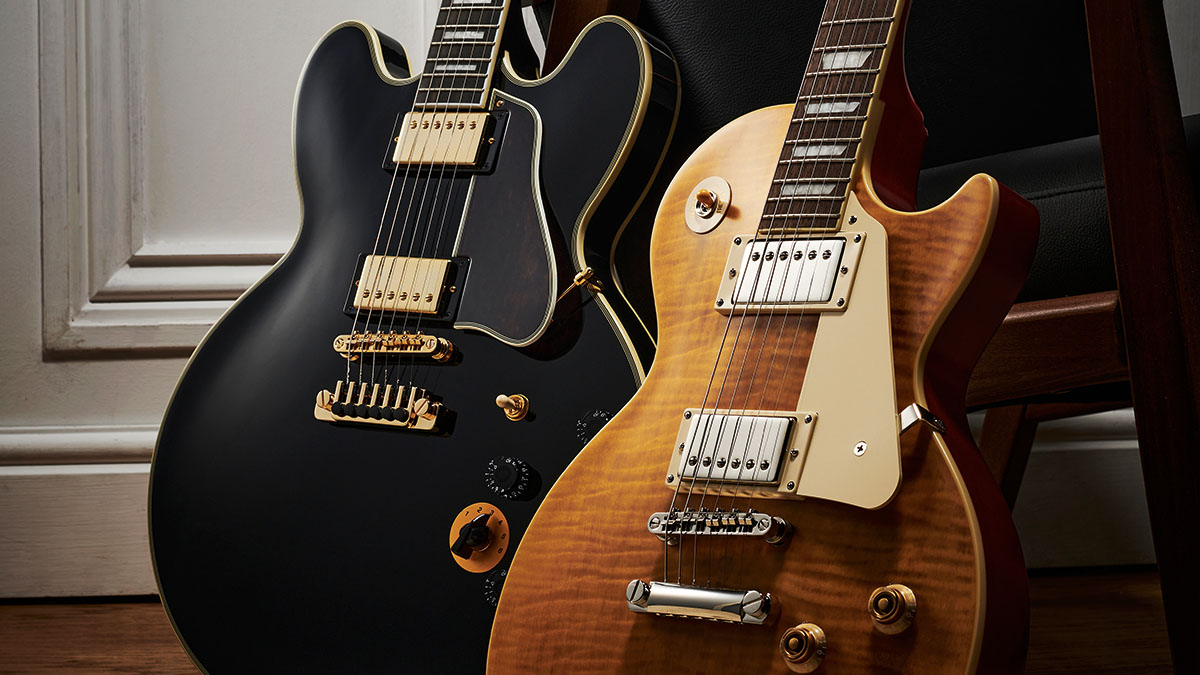Guitar World Verdict
The Lazarus is a brilliantly thought-out, relatively budget guitar that punches well above its weight, while this Lucille is a head-turner that might be heavyweight and scary for anyone unfamiliar with the Varitone, but is very playable with a lot of sweet sounds.
Pros
- +
Build, looks, finish, playability, value.
- +
Lucille has a huge range of tones.
Cons
- -
Lucille is a heavy guitar.
- -
Its Varitone and dual inputs might put some people off.
You can trust Guitar World
Epiphone is knocking it out of the park at the moment. We adored the Coronet, Crestwood and Wilshire trio, and this duet looks equally set to stun.
On offer is a recreation of Joe Bonamassa’s legendary ‘Lazarus’ Les Paul, an instrument he resurrected from a dilapidated wreck into a delicious original-looking ’59 Les Paul. This sits alongside a jet black semi-solid ES-355-style Lucille model as played by perhaps the greatest electric blues guitarist of all.
Joe Bonamassa ‘Lazarus’
The story of how Joe Bonamassa acquired his ’59 Les Paul known as ‘Lazarus’ has been so widely told that we won’t go into it in micro detail here.
The short version is that a guitar dealer friend brought Joe a tatty Les Paul that had been poorly overpainted in red, and a box of assorted parts. By a process of elimination Joe deduced that it could only be a late 50s ’Burst.
He took the instrument to his restorer, who refurbished the tired beast to its former glory. Joe wanted to share this slice of guitar folklore in an instrument that looked and sounded great but that was attainable by all. Joe had collaborated with Epiphone on previous projects, and between them they devised the instrument you see here.
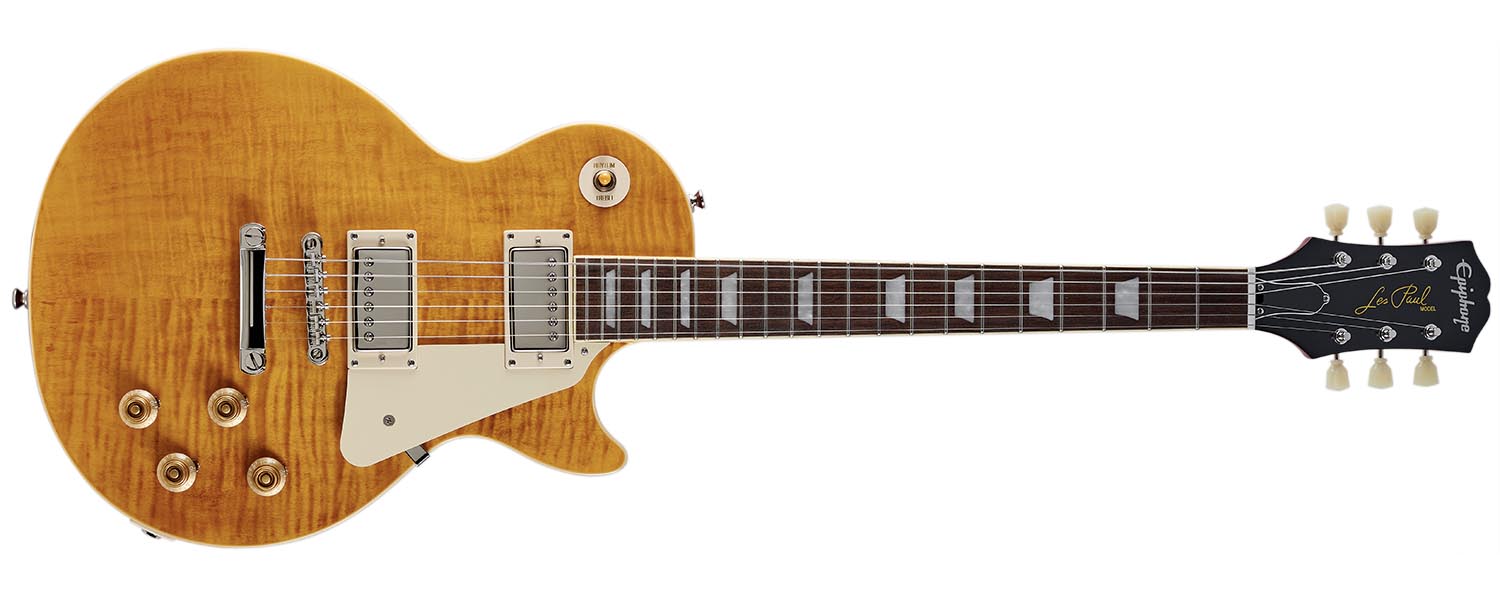
Featuring the Les Paul’s classic construction of mahogany back (here, two pieces) and a one-piece mahogany neck with centre-joined maple cap, it deviates slightly in that the usual rosewood fingerboard becomes Indian laurel and the standard maple cap is topped with a figured AAAA veneer. It’s a great way to get the look of a great ’Burst but at a fraction of the cost.
The guitar comes in what Epiphone calls ‘aged gloss’ – essentially a version of Gibson’s matt-looking VOS treatment, although on a poly, not nitro finish. The colour is basically ‘lemon drop’ with all but zero sunburst remaining, and the headstock shape the elegant 60s Kalamazoo style.
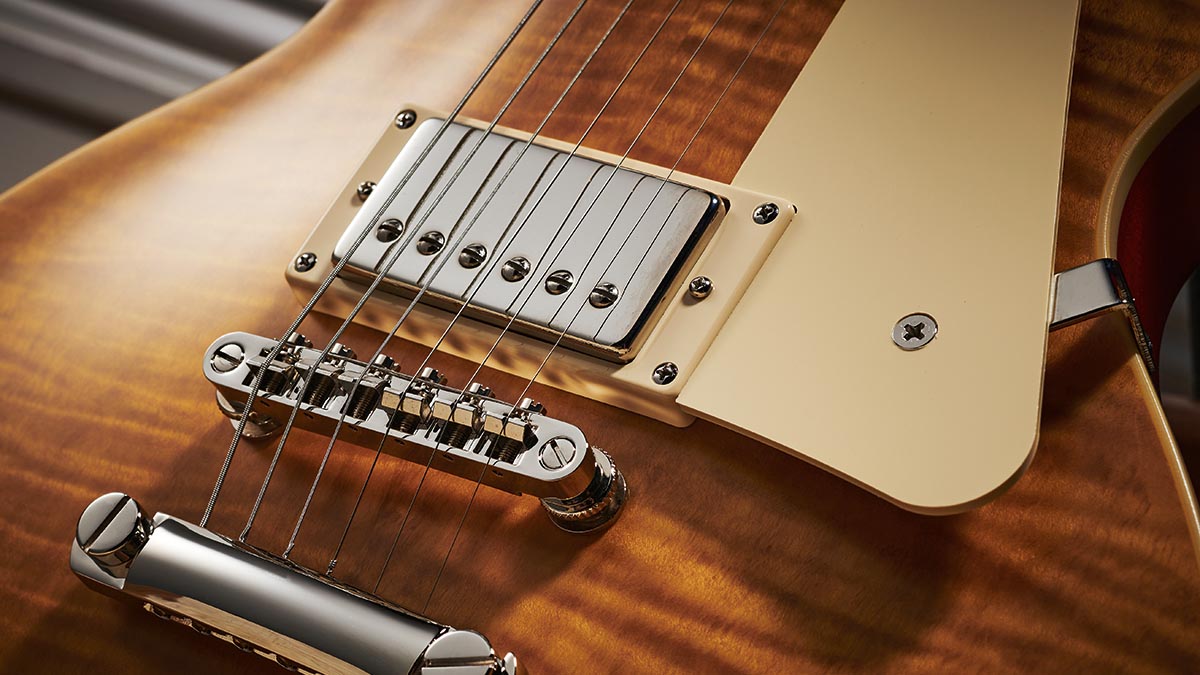
Joe insisted on the long neck tenon of vintage Les Pauls for its sustain-enhancing properties, plus Gibson’s Burstbucker 2 at the neck and a more powerful Burstbucker 3 in the bridge position.
The internal wiring is 50s style with 500kohms CTS pots, Mallory capacitors and a Switchcraft three-way toggle. All the usual Les Paul appointments remain, including cream pickguard, binding, pickup surrounds and switch tip, Kluson-style ‘Keystone’ tuners, and ‘bell’ truss rod cover.
The tune-o-matic bridge and stud tailpiece are the excellent Epiphone LockTone, which fit tightly on their studs so don’t fall off and potentially damage your guitar when restringing. All hardware is shiny nickel and the whole thing looks way more classy than its modest price suggests.
BB King Lucille
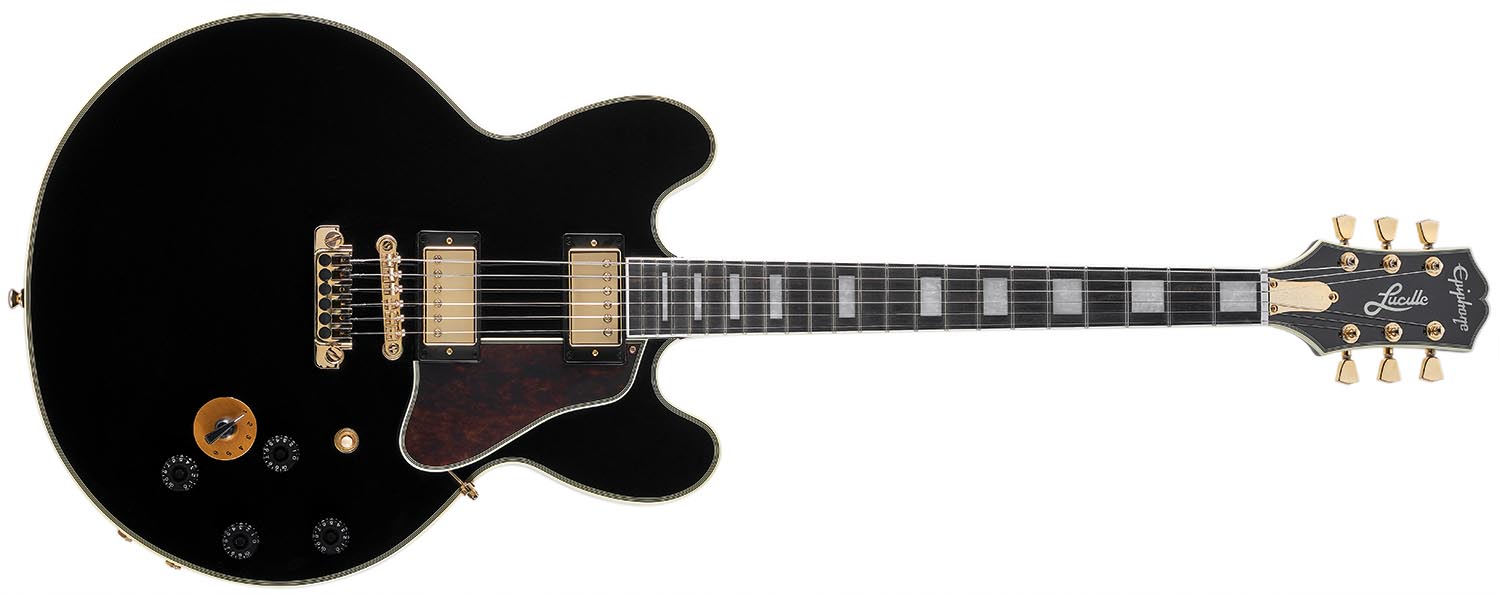
Again, the tale is so well known that we’ll simply say that BB King christened all his guitars ‘Lucille’ and from 1959 a Gibson ES-355 was King’s guitar of choice. He changed them frequently, from cherry or wine red earlier on, to finally settling on ebony.
Gibson has produced Lucille models in various guises, but King always stipulated his signature instruments had no f-holes and came fitted with a pair of outputs so he could run his guitar into two amplifiers when the need arose. He also liked the TP-6 fine-tuning tailpiece, so we see that here, too.
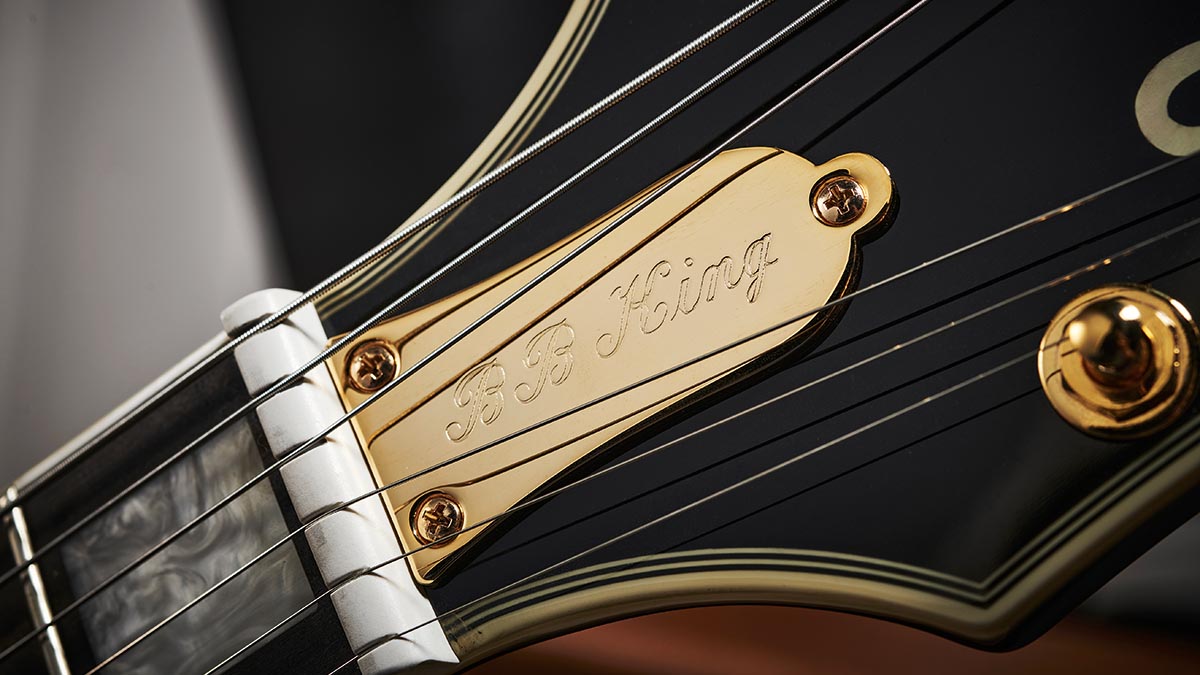
Epiphone’s take on the Lucille is beautiful to behold. As smart as a black tuxedo, its gold hardware and multiple white/black binding underline the topdrawer effect. Under the poly gloss sits a laminated maple body with solid maple centre block, and a maple neck, while the fingerboard is ebony with pearloid blocks.
The new Epiphone headstock shape makes another appearance here and – with its pearl inlaid ‘Lucille’ emblem and inscribed brass truss rod cover – looks oh-so classy. Add in Grover Rotomatic tuners, Alnico Classic Pro pickups, a bound tortoise style pickguard, Gibson six-way Varitone switch, 500kohms CTS pots and those twin outputs to complete the picture.
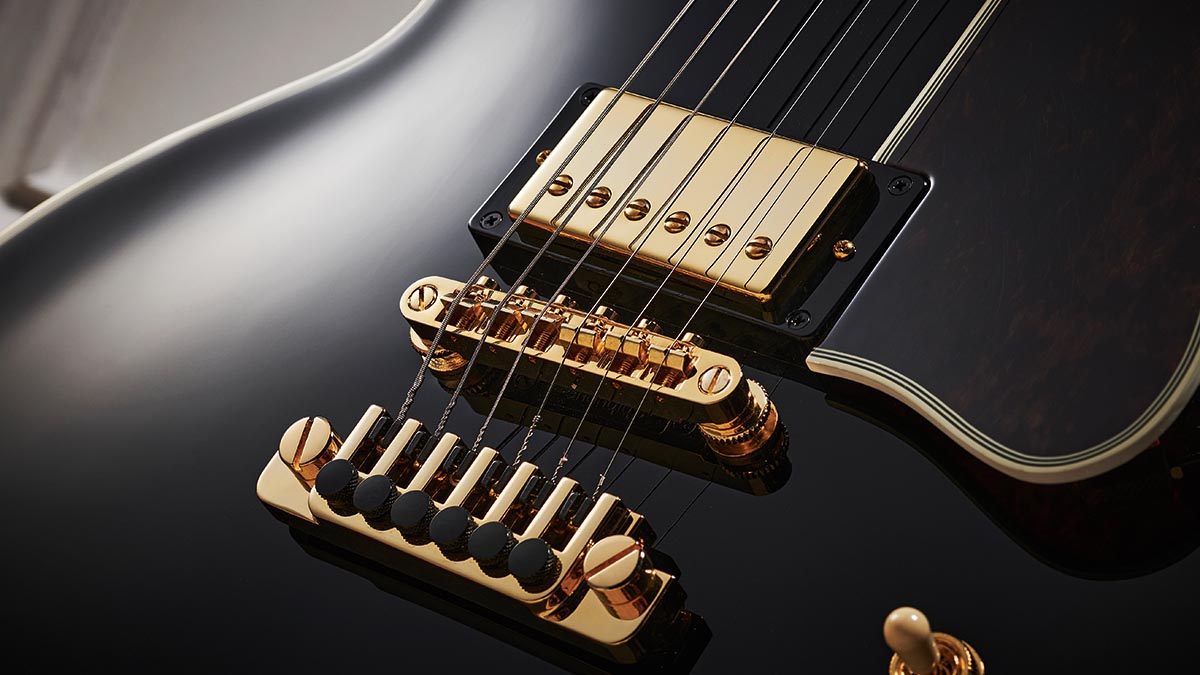
Regarding the outputs here, one is a straightforward mono jack that’s used for standard mono operation (both pickups), but when you plug another lead into the second output jack, the pickups are split, sending the neck pickup to one amp (or input) and the bridge to another.
Another curiosity found on this Lucille is the Varitone switch, a six-position rotary ‘notch filter’ that works on all pickup selections. It’s bypassed in position 1 so the guitar acts like a regular ES-335. But from then on the tones progressively shift as two chokes and a selection of capacitors filter out certain frequencies.
Feel & Sounds
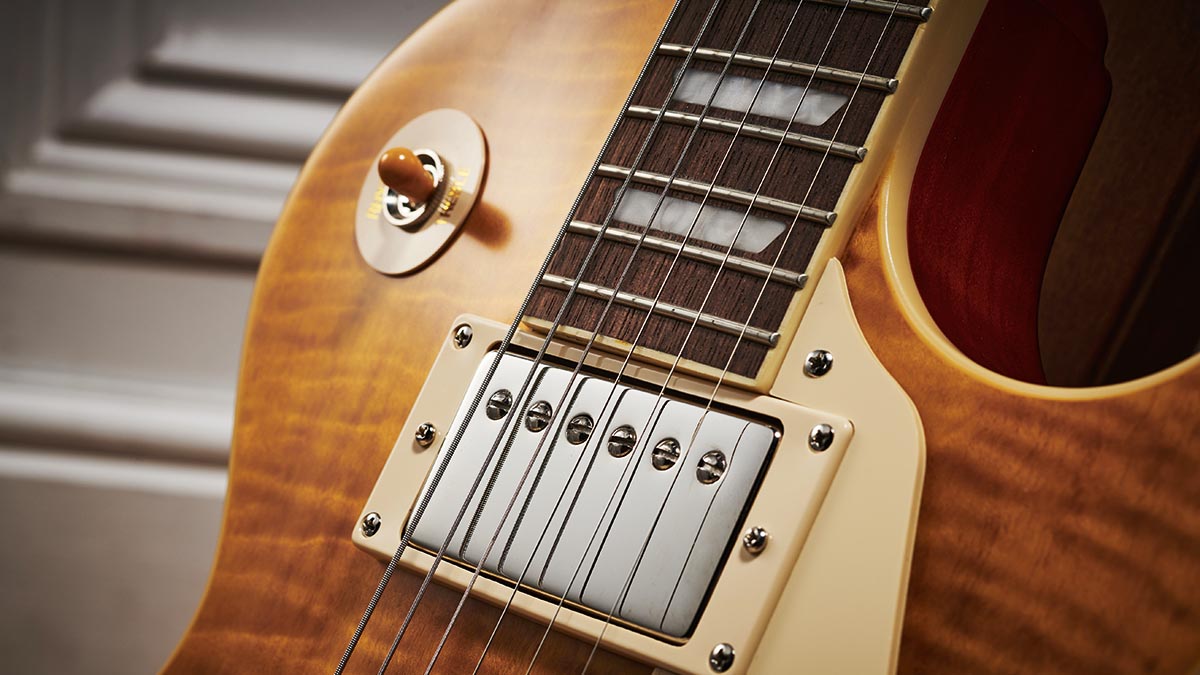
Weight-wise, the ‘Lazarus’ just pips the 8lb (3.69kg) mark so is very comfortable on a strap. The Lucille on the other hand, is something of a monster, coming in a full pound over that at 9.1lbs (4.1kg), so it’s weighty but not unbearable.
Joe’s original ‘Lazarus’ has a slightly smaller-than-usual ’59-style neck and the Epiphone Les Paul follows suit. It’s a comfortable size for almost any hand, and the action is low and slinky. The ‘Lazarus’ plays like a real grown-up Les Paul and nothing like an instrument costing in some instances several times less.
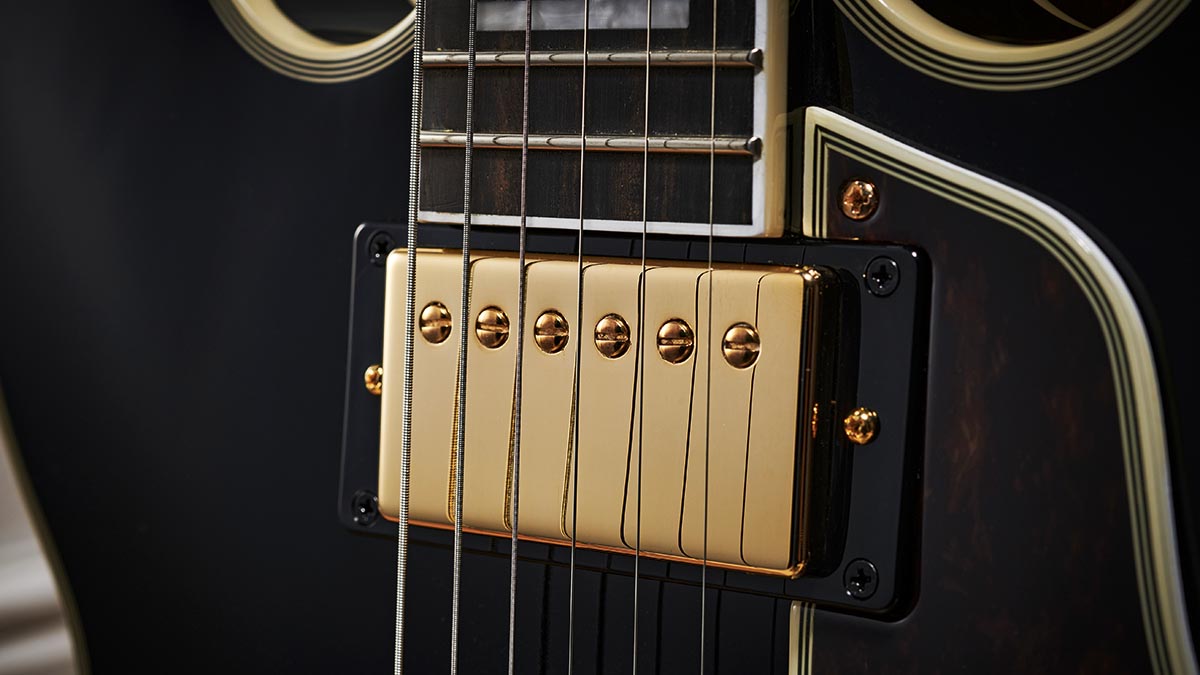
The Lucille’s neck, while a tad bigger, feels just as smooth and finger-friendly and, of course, its superior high-end access lays out the entire ebony ’board for your playing pleasure. Again, the action is perfect, offering an extremely gratifying playing experience. There are no nasty surprises on either guitar.
Plugging in the ‘Lazarus’ to a Matchless Lighting reveals a strident set of tones that would appease the most ardent Les Paul lover. The neck’s Burstbucker 2 is warm but clear when set clean but becomes fat and juicy when cranked.
Indeed, across the spectrum of pickups and settings it simply sounds like a fine Les Paul. It’s easy to forget it comes in at under a grand. Favourite tone? Both pickups on, bridge up full, neck knocked back to 7 – it sounds like the biggest bridge humbucker ever.
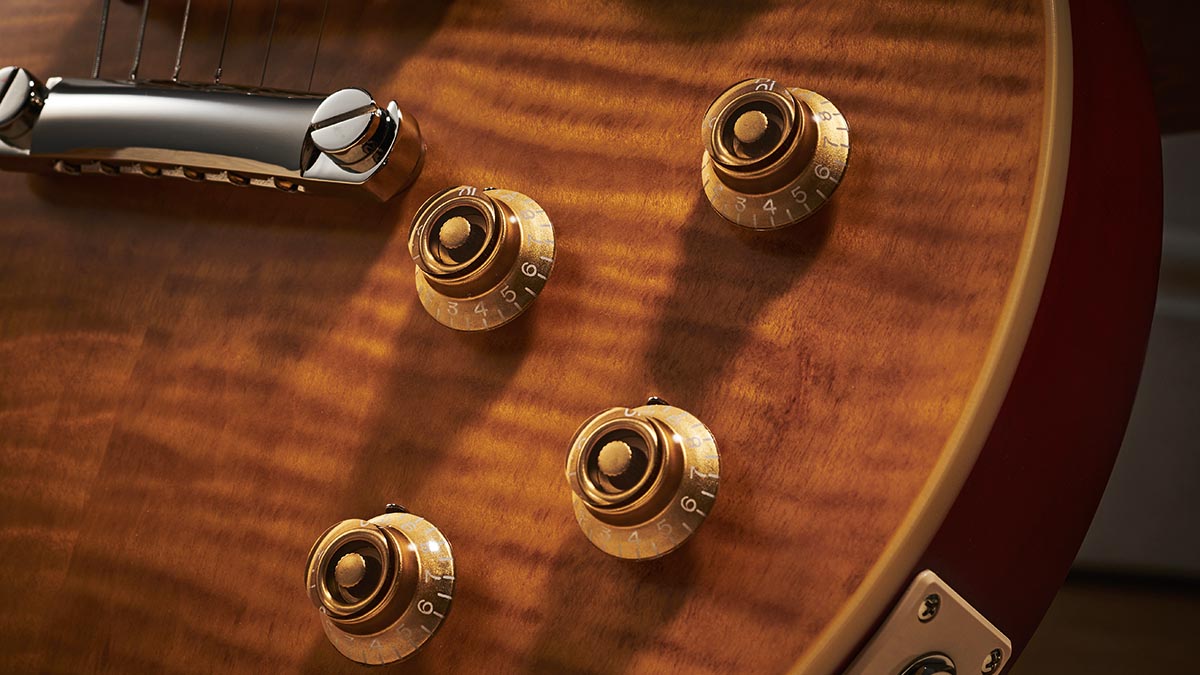
On the Lucille, the possible permutations from three pickup settings and six more on the Varitone means we can only hint at what’s available. Memories of dreadful-sounding, unusable tones instantly fade away here. True, there are few you wouldn’t naturally gravitate towards, but there’s a surprising amount that you might.
As mentioned earlier, Varitone position 1 leaves the guitar in regular humbucking ES-style mode. Compared to our Les Paul, it’s more polite, perhaps a little scooped, but fat and gutsy nonetheless. BB King favoured positions 2 and 3 on the Varitone because they gave him his trademark ‘nasal’ tone, slightly compressed sounding and not miles away from Peter Green’s out-of-phase sound.
Although the majority of all but position 1 settings display a degree of ‘honk’, many are rather nice, and even the stranger ones might come in handy in the studio.
Verdict
There’s a lot to like about this pair of signature guitars from Epiphone. They look fantastic. Build quality is top notch. Sounds are as good or better than instruments way above their pay grade. They play great, too, and if they had Gibson on the headstock we would indeed be saying, “Gibson has really got its act together here.”
Joe Bonamassa knows his Les Pauls better than almost anyone, and his input on this model is clear to see
No, they’re not nitro-finished and clearly compromises have been made with some of the timbers selected here. But for guitars that look, play and sound this good, do we really care? To be honest, not a jot!
Joe Bonamassa knows his Les Pauls better than almost anyone, and his input on this model is clear to see. So well done, both Joe and Epiphone. Regarding the Lucille, were BB still around, our guess is he’d be equally delighted with what Epiphone has done in his name here.
And while it is a weighty beast, and its Varitone and stereo output might scare some, just ignore them, use the guitar in ‘normal’ mode and you’ll have a brilliant instrument that will not disappoint. You might need an extra-wide strap, though!
Specs – Epiphone Joe Bonamassa ‘Lazarus’ 1959 Les Paul Standard: 9/10
- PRICE: $899 / £799 (inc case)
- ORIGIN: China
- TYPE: Single-cutaway, solidbody electric
- BODY: Solid mahogany body and neck, maple cap with AAAA veneer
- NECK: Mahogany, 59 ‘smaller medium C’ profile, glued-in
- SCALE LENGTH: 628mm (24.75”)
- NUT/WIDTH: Graph Tech Tusq/43mm
- FINGERBOARD: Bound Indian laurel, pearloid trapezoid inlays, 305mm (12”) radius
- FRETS: 22, medium jumbo
- HARDWARE: Epiphone LockTone tune-o-matic bridge and stud tailpiece, Kluson-style vintage tuners – nickel‑plated
- STRING SPACING, BRIDGE: 52mm
- ELECTRICS: Gibson Burstbucker 2 (neck) and Burstbucker 3 (bridge), 3-way toggle pickup selector, 2x volumes, 2x tones (CTS pots/Mallory capacitors)
- WEIGHT (kg/lb): 3.69/8.1
- OPTIONS: No
- RANGE OPTIONS: No
- LEFT-HANDERS: No
- FINISH: Lazarus aged gloss only
Specs – Epiphone BB King Lucille: 8/10
- PRICE: $949 / £849 (inc case)
- ORIGIN: China
- TYPE: Double-cutaway, semi-solid electric
- BODY: Laminated maple/poplar/maple without f-holes; solid maple centre block
- NECK: Maple, 59 ‘medium C’ profile, glued-in
- SCALE LENGTH: 628mm (24.75”)
- NUT/WIDTH: Tusq/43mm
- FINGERBOARD: Bound ebony, pearloid block markers, 305mm (12”) radius
- FRETS: 22, medium jumbo
- HARDWARE: Epiphone LockTone tune-o-matic bridge, TP-6 fine-tuning tailpiece, Grover Rotomatic tuners – gold-plated
- STRING SPACING, BRIDGE: 52mm
- ELECTRICS: 2x Alnico Classic Pro pickups, 3-way toggle pickup selector, 2x volumes, 2x tones, 6-way Varitone switch (CTS pots/Mallory capacitors), mono and stereo outputs
- WEIGHT (kg/lb): 4.1/9.1
- OPTIONS: No
- RANGE OPTIONS: No
- LEFT-HANDERS: No
- FINISH: Ebony gloss
- CONTACT: Epiphone
In the late '70s and early '80s Neville worked for Selmer/Norlin as one of Gibson's UK guitar repairers, before joining CBS/Fender in the same role. He then moved to the fledgling Guitarist magazine as staff writer, rising to editor in 1986. He remained editor for 14 years before launching and editing Guitar Techniques magazine. Although now semi-retired he still works for both magazines. Neville has been a member of Marty Wilde's 'Wildcats' since 1983, and recorded his own album, The Blues Headlines, in 2019.
“It holds its own purely as a playable guitar. It’s really cool for the traveling musician – you can bring it on a flight and it fits beneath the seat”: Why Steve Stevens put his name to a foldable guitar
“Finely tuned instruments with effortless playability and one of the best vibratos there is”: PRS Standard 24 Satin and S2 Standard 24 Satin review
